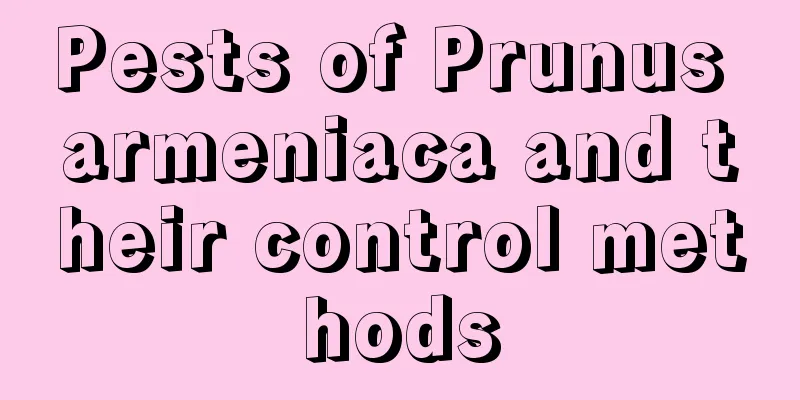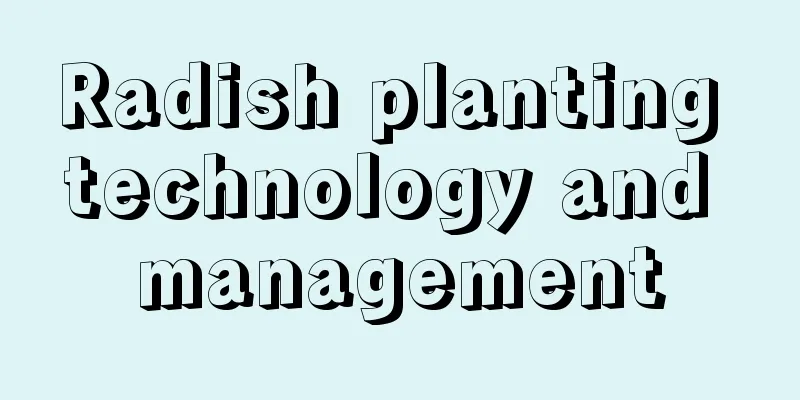Pests of Prunus armeniaca and their control methods

Pests of elmleaf plum: aphidssymptomThe damage occurs on young leaves, with minor damage affecting the growth of the plant. In severe cases, the plant will wither, a large number of leaves will die, and finally the entire plant will die. Prevention and treatment methodsIf a large number of aphids are found causing harm, chemical control should be carried out immediately. Use the ratio of 1:10 to soak tobacco leaves in water, and spray the whole plant once after soaking for about 5 hours. Aphids can be killed with 1500 times diluted aphid remover, or a solution of laundry detergent, urea and water in a ratio of 1:3:300 can be prepared and sprayed on the entire plant. About 2-3 times. Or spray once with 900 times diluted 12% oxydemeton-methyl emulsion or 1100-1600 times diluted malathion emulsion, or spray once with 900 times diluted DDT emulsion or 14000-19000 times diluted granules of 70% imidacloprid. Pests of Prunus mume: Red spider mitessymptomRed spider mites reproduce quickly in weeds, plant branches and other environments. They harm the entire plant, and several generations may mix on the plant and harm it at the same time. When the damage is serious, the entire plant will die. Prevention and treatment methodsMix sulfur + salt + water (ratio 10:1:1:40) evenly and then use it. Applying "white" can prevent mature larvae from climbing down trees and overwintering in shallow soil layers, and can also prevent the larvae of camphor bush borer from climbing up trees in spring. 1500 times diluted 40% dicofol emulsifiable concentrate can kill red spider mites. Pests of Prunus mume: Psoralea corylifoliasymptomThe adult moth emerges in the afternoon, and the male moths prefer to be active in the evening or early morning. The larvae usually feed on the egg shells in the afternoon 1-2 days after hatching, then climb onto branches or leaves or float to nearby branches and leaves, spin silk to stick to broken leaves to build a protective sac and begin to feed. The larvae in the protective sacs bite leaves, tender shoots, or peel the bark of branches and fruits, which may cause the complete loss of branches and leaves in some areas and lead to the death of the plant. Prevention and treatment methodsWhen the number is small, they can be killed manually and burned in batches. When insect pests occur severely, spray 2050 times diluted pyrethroid, 900 times diluted 85% DDT emulsifiable concentrate, or 1500 times diluted 80% trichlorfon crystals during the larval stage. |
<<: Common Pests of Angelica dahurica and Their Control Methods
>>: Common pests of night-blooming primrose and their control methods
Recommend
When is the best time to transplant elm trees (elm seedling transplanting time and method)
Elm is a familiar tree species, and bonsai can be...
How to change the soil and pot of banyan tree
The role and requirements of changing soil and po...
Seed propagation of Cassia winged pod
Selecting a seed If you are not shopping online, ...
What to do if rust spots appear on fiddle-leaf fig
Rusty condition: At the beginning, there will be ...
Hosta flower meaning
1. Tranquility: The Hosta blooms quietly. The col...
How to take cuttings of Dieffenbachia
1. Time Selection Generally, it is most suitable ...
What kind of trees are suitable for the yard? What kind of trees are suitable for the yard?
The yard is suitable for planting greening trees,...
What fertilizer is good for cucumber topdressing?
Cucumber topdressing time 1. Germination period: ...
What to do if the bird's nest fern has rotten heart
Causes of bird's nest fern heart rot The caus...
What flowers are best to give to your girlfriend?
1. Red Rose Since ancient times, red roses have b...
How to care for the newly bought Crinum
1. Temperature Temperature plays an important rol...
Gerbera cultivation methods and precautions
Farming methods Light and temperature Gerbera lik...
Cultivation methods, characteristics and maintenance of potted forsythia
1. Breeding methods 1. Soil: Forsythia has very l...
How to tell if an avocado is ripe? How to ripen an avocado
1. How to judge To determine whether an avocado i...
The flower language and meaning of Dripping Guanyin, what are the taboos of giving it as a gift?
1. Flower language and meaning of Dripping Guanyi...









